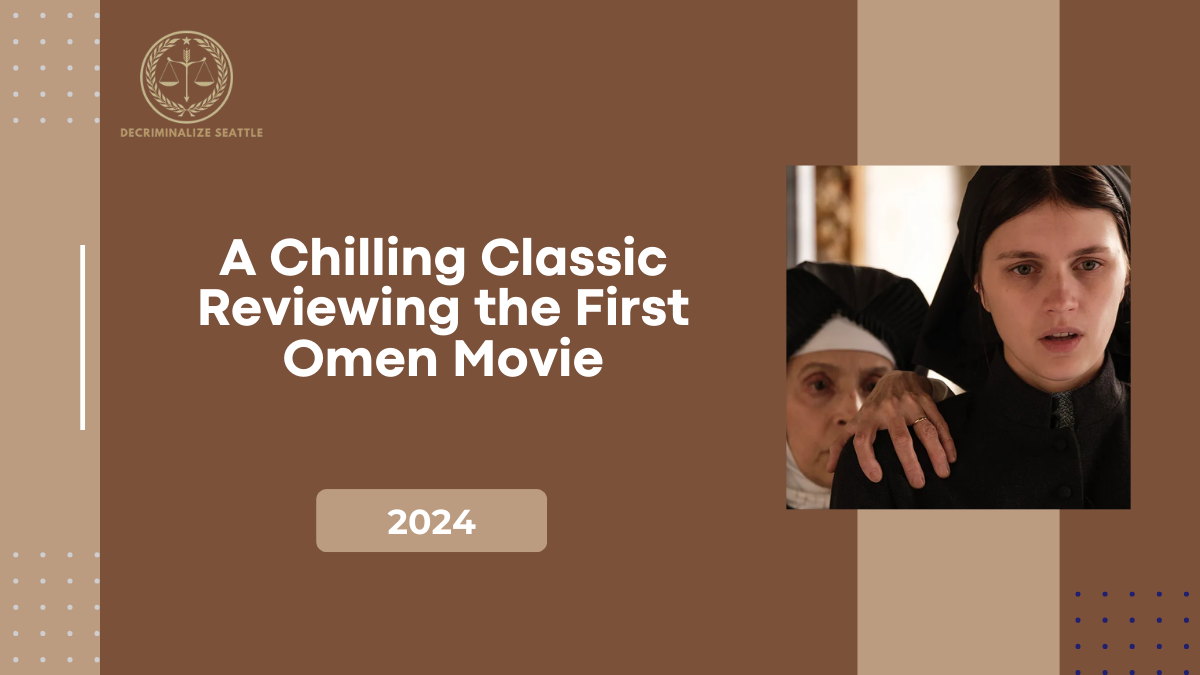Horror cinema in the 1970s was marked by groundbreaking films that redefined the genre, and The Omen (1976) stands tall among them. Directed by Richard Donner, The Omen tells a haunting tale of prophecy, loss, and evil incarnate. With its compelling narrative, unforgettable performances, and iconic score, the movie earned its place as one of the most terrifying films of its era. This review delves into what made The First Omen a masterpiece, examining its story, performances, direction, and cultural impact.

Plot Overview: The Birth of Evil
The story centres on Robert Thorn (Gregory Peck), an American diplomat, and his wife, Katherine (Lee Remick). Unable to bear the grief of losing their child during childbirth, Robert secretly adopts a baby boy, Damien, without informing Katherine. Unbeknownst to them, Damien is no ordinary child—he is the Antichrist, the harbinger of doom.
As Damien grows older, strange and sinister events begin to plague the Thorns. From mysterious deaths to terrifying accidents, it becomes evident that Damien’s existence is entwined with a chilling prophecy. The narrative escalates into a heart-pounding journey as Robert uncovers the truth about his adopted son and faces an impossible choice that questions the very foundation of parenthood and morality.
Stellar Performances That Anchor the Horror
One of the most striking aspects of The Omen is its cast, led by Gregory Peck and Lee Remick.
- Gregory Peck: Known for his dignified roles, Peck brings a profound sense of gravitas and vulnerability to Robert Thorn. His portrayal of a father torn between love and duty adds emotional weight to the film.
- Lee Remick: As Katherine, Remick embodies fragility and growing paranoia, capturing the slow unravelling of a mother trapped in a nightmare.
- Harvey Stephens: As Damien, the young actor delivers a chilling performance. His innocent appearance contrasts with the sinister aura he exudes, making his character all the more unsettling.
The supporting cast, including Billie Whitelaw as the fanatical nanny Mrs Baylock and David Warner as the ill-fated photographer Jennings, further enriches the film with their nuanced performances.
Richard Donner’s Visionary Direction
Richard Donner’s direction plays a pivotal role in the film’s success. His meticulous attention to detail ensures that every scene contributes to the mounting tension. Donner uses atmospheric settings, such as the gothic landscapes of Rome and England, to create a sense of dread that permeates the entire movie.
The pacing is deliberate, allowing the horror to build gradually rather than relying on cheap jump scares. This slow-burn approach intensifies the impact of the film’s shocking moments, making them linger in the audience’s mind.
Iconic Musical Score by Jerry Goldsmith
No discussion of The Omen is complete without mentioning Jerry Goldsmith’s Oscar-winning score. The chilling choral composition, “Ave Satani,” is an auditory embodiment of evil, perfectly complementing the film’s dark themes. Goldsmith’s music elevates The Omen from a standard horror film to an unforgettable cinematic experience.
Cultural Impact and Legacy
The Omen became a cultural phenomenon upon its release, cementing its place in the annals of horror. It sparked debates about religion, prophecy, and the nature of evil, resonating with audiences beyond its initial run.
The film also set the stage for sequels and spin-offs, though none quite captured the same magic as the original. Its influence is evident in modern horror films, many of which borrow thematic and stylistic elements from Donner’s classic.
Conclusion
The Omen (1976) is a masterful blend of storytelling, direction, and performance, making it a cornerstone of the horror genre. Its exploration of existential dread, combined with its technical brilliance, ensures that it remains as chilling today as it was nearly five decades ago. For horror enthusiasts and cinephiles alike, The Omen is a must-watch that continues to haunt the imagination of its viewers.
Click here to know more.